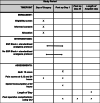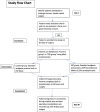Efficacy of the erector spinae plane (ESP) block for quality of recovery in posterior thoraco-lumbar spinal decompression surgery: study protocol for a randomised controlled trial
- PMID: 33596968
- PMCID: PMC7891132
- DOI: 10.1186/s13063-021-05101-2
Efficacy of the erector spinae plane (ESP) block for quality of recovery in posterior thoraco-lumbar spinal decompression surgery: study protocol for a randomised controlled trial
Abstract
Background: Spinal surgery can be associated with significant postoperative pain. Erector spinae plane (ESP) block is a new regional anaesthesia technique, which promises effective postoperative analgesia compared with systemically administered opioids, but has never been evaluated in terms of patient-centred outcomes such as quality of recovery and overall morbidity after major thoraco-lumbar spinal surgery.
Methods: We are conducting a prospective, randomised, double-blind trial in two hospitals in the Republic of Ireland. The sample size will be 50 patients (25 in the intervention group and 25 in the control group). Randomisation will be done using computer-generated concealed envelopes. Both patients and investigators collecting outcome data will be masked to group allocation. Participants will be male or female, aged 18 years and over, capable of providing informed consent and ASA grade I-IV. Patients scheduled to undergo posterior approach thoraco-lumbar decompression surgery involving 2 or more levels will be recruited to the study. Participants randomised to the intervention arm of the study will receive bilateral ultrasound-guided ESP block totalling 40 ml 0.25% levo-bupivcaine (20 ml each side), post induction of general anaesthesia and before surgical incision. The control group will not receive an ESP block. Both groups will receive the same standardised analgesic protocol both intra- and postoperatively. The primary outcome will be the quality of recovery at 24 h postoperatively as determined by the QoR-15 score. This score is determined by a questionnaire which measures patient responses to 15 subjective parameters, each response graded on a scale from 0 to 10. The maximum score achievable is 150 with a potential minimum score of 0. Higher scores indicate a higher quality of recovery experience. Secondary outcomes will include area under the curve (AUC) of VRS pain versus time at rest and on movement up to 24 h postoperatively, 24 h opioid consumption, time to first analgesia in recovery, length of stay (LOS), incidence and severity of postoperative complications as measured by the Comprehensive Complication Index (CCI) score.
Discussion: To the best of our knowledge, this will be the first randomised control trial to examine the efficacy and safety of the ESP block in terms of patient-centred outcomes in the setting of major spinal surgery. The QoR-15 is a validated means of assessing the quality of recovery after surgery and gives a more holistic assessment of the recovery experience from the patient's point of view.
Trial registration: This trial is pre-registered on ClinicalTrials.gov reference number NCT04370951 . Registered on 30 April 2020. All items from the World Health Organisation Trial Registration Data Set have been included.
Keywords: Analgesia; Erector spinae plane block; Morbidity; Quality of recovery; Spine surgery.
Conflict of interest statement
The authors declare no competing interests.
Figures
References
-
- Schwartzmann A, Peng P, Maciel MA, et al. A magnetic resonance imaging study of local anesthetic spread in patients receiving an erector spinae plane block. Can J Anesth. 2020:1–7. - PubMed
Publication types
MeSH terms
Associated data
LinkOut - more resources
Full Text Sources
Other Literature Sources
Medical
Miscellaneous



